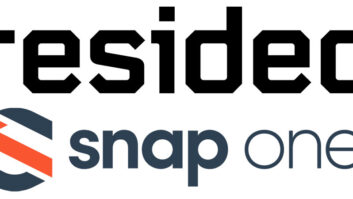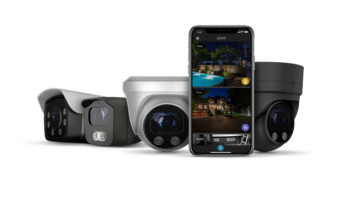by John Sciacca
One of the constant questions that we face as custom installers — beyond, of course, the, “Can’t I just do something wireless?” and, “What do you mean ‘it’s my cable box’?” and “You’re gonna charge me for that?” and “Will you match the price I found at notauthorized.com and still give me your great service?” — is, “Do I really need all of that wire?”
In the past, the back panel of a system or a rack would be PACKED with cabling. There were big rainbow-colored loops of wire spooling out in all directions, dressed down in trunk lines thick enough to moor an aircraft carrier. Featuring audio signals, video signals, control cabling, speaker wiring, and power cabling, we reveled in the manliness of our trunk lines, proud with the awesomeness that was all of that plastic sheathed copper. Check the back of my rack. Are ye not humbled by the quantity of my cabling and the cut of my jib?!

But homeowners saw all of that rainbow-colored, hopefully nicely routed and labeled, cabling and didn’t see beauty. They didn’t see potential-dripping-with-awesome barely harnessed by a zip-tie. Oh, no! Many of them took it as something shameful and as some kind of personal affront to their dignity and sense of social graces, as if a neighbor or random passerby was catching an unwanted glimpse at a petticoat. And they would inevitably hit you with the, “Oh, my lands! Must I really have all of that cabling? It seems SO excessive. I just wanted a little bit of music by which to churn my butter and flog my clothing against my wash-rock. I best go lie down upon my fainting couch.”
And I would often respond, “Well, why don’t you just tell me which cable you don’t want to have, and I’ll be glad to rip it out and tell you which part of your system you’ll be giving up. This one? Well, that was your video feed. You do like to watch, right? That one? Well, now you just lost audio. This little blue one? Yeah, that’s the internet. Say bu-bye to streaming Netflix. Oh, and you don’t even want to THINK about pointing at that one, no siree!”
But HDMI has greatly streamlined that. Now with a single, mostly-doesn’t-fall-out-and-cause-a-service-call-issue cable, you can replace up to 11 other cables! Yes, man, I said ELEVEN! (That would be the three from component video and the eight from multi-channel analog audio if you’re keeping the box score at home.) This is a picture of what I ripped out of one system and replaced with six, oh-so-easy-to-bundle-and-manage HDMI cables.

That is a *serious* amount of cabling reduction. Leaving you with a thick pile of metal-headed, fits so good in your hand don’t understood why I have this sudden barbaric desire to gather it up and swing it violently round-and-round my head as I charge after someone Maximus-style shouting, “At my signal…UNLEASH HELL!”
So, now we can greatly streamline all of that mess behind people’s racks, simultaneously making their systems not only look and perform better but also appeal to the evolved pre-disposition towards irrational cable hatred AND make it easier for us to rack-in and service later on. Fantastic, right? End of blog, right?
Not so fast, cable-sabe! You would try and take the easy way out, wouldn’t you? You’d just be totally content to slink away, overlooking the two other cables gumming up the works. Just blissfully sweeping the Ethernet and power cabling under the carpet when no one was looking. That is not the way to get the Sciacca name to stand for quality. No, sir!
Plus, we’re not even addressing the fact that even if HDMI were the second coming of all that is good and cabley, and it could carry these things, it still has a bit of a range issue. If you’re an installer and you pull HDMI cabling longer than 10 meters, you are brave; longer than 15 meters and you’re gonzo-daring; longer than 20 and you must just like to look at your customer’s sad-turning-to-bewildered-turning-to-angry faces and explain why their screen is filled with sparklies and occasionally goes all blue/black screen of death on them.
Now, sure, you could eliminate the Ethernet cable and go with WiFi but for some applications the speed and QoS just isn’t up to the task. Ever tried streaming REAL HD via wireless? I…ca…be…ki…f…st…ery. Wait, let me just plug the cable in; OK, here we go. It can be kind of stuttery. Other times the WiFi signal might just be too spotty and unreliable in that location.
And then there’s power. I mean, no one wants to mess with high voltage, right? That stuff can kill you! Seriously, there’s a good reason why you never hear about speaker installers accidentally touching positive and negative together and then looking at the smoking black char hole where a foot used to be. (OK…there were those rumors about being able to arc-weld with some of those old Bryston power amps…) Plus Romex wire is all stiff and pokey to work with.
But with the advent of a new(ish) technology, we have just taken one giant lean in the direction of being down to a truly single cable solution.
The technology? HDBaseT. I’ll let the HDBaseT folks explain their technology first:
HDBaseT technology is optimized for whole-home distribution and can connect all the entertainment devices in the home through its 5Play feature set, converging uncompressed full HD digital video, audio, 100BaseT Ethernet, power over cable and various control signals all through a single 100m/328ft Cat-5e/6 cable.
The compelling features of HDBaseT technology include:
Uncompressed video/audio up to 10.2 Gbps. HDBaseT technology is capable of scaling up to 20 Gbps of throughput while enabling multi-stream support
Maximum cable length of up to 100m, including support of multiple hops, up to 8 x 100m
Low-cost standard Cat-5e/6 LAN cable and standard RJ-45 connector
Support for 100Mbps Ethernet – HDBaseT technology is capable of scaling up to Gigabit Ethernet
USB and HDCP Support
and…drumroll…get ready….here’s the biggie:
Supplies up to 100W of power, which can be utilized to power a remote TV.
I hear you out there, breathing through your open mouths and struggling to form a complete thought worthy of summarizing the enormity of it all. “Huh? Wha? Power? On a low-cost standard Cat-5e/6 LAN cable and standard RJ-45 connector?”
Yes. I speak true. According to the HDBaseT folks and their frequently asked questions, “Yes. You can power an HDBaseT-enabled 40-inch LED TV with 70 watts, and in the near future the TV size you can power with HDBaseT will dramatically increase. HDBaseT can power remote TVs and other devices up to 100 watts, a capability no other transport technology can provide. A 40-inch TV connected via an HDBaseT-enabled Cat-5e/6 cable requires no power source. This is ideal for wall-mounted flat-panel TVs prevalent in the consumer living room today.”
Here is a link to a recent Ethernet-powered TV demo. (Whether it was using the HDBaseT special voodoo sauce or not isn’t mentioned. Let’s just assume that it is.)
Pow! One cable. One CHEAP Cat-5 cable, for that matter. For all of your audio, your video, your internet, and your power. One cable to replace them all. One cable to link them all, and in true HD.
Look for an upcoming review of an HDBaseT HDMI extender coming to an issue of Resi Systems near you! In the mean time, feel free to dunk your heads deep in the cool, refreshing single-cabled HDBaseT waters and drink deeply from their fount of knowledge by clicking this link to hdbaset.org.






